
As this is only the second ballet I’ve seen recently (the first being an accidental brush with Carlos Acosta a few years ago) I came at this piece pretty green.
So please don’t expect any great treatise on what was good and what was bad about either the dancing or the music. Instead, I’ll be yattling on about what I liked and what I didn’t, my overall impression, and which dancer had bigger thigh muscles than the other. Oh, and what I learnt about ballet in the interval from the kind and helpful woman who was sitting next to me.
I mean, let’s face it, ballet and opera are difficult to get into. It took me about six operas before I could tell whether one was good or bad. It’s just not a language we’re brought up with unless we have culture vulture parents and even then the tendency is to just ignore the silly buggers until you get older and think ‘maybe they had a point’. But by then it’s too late and you just have to educate yourself – no easy job when both ballet and opera can cost so much.
I chose this English National Ballet performance in particular because it had a theme – Rudolph Nureyev – and I knew a bit about him which was a start. Also, it comprised three acts with very different sorts of ballet, so it would serve as an introduction to all three.
The reason for this programme is that this year marks the 20th anniversary of Nureyev’s death from AIDS. He’d been diagnosed HIV+ eight years before but had by and large ignored it and simply carried on with his life. If he’d lived, Nureyev would have been 75 this year.
Firstly, there was an informative large screen presentation about the genius of the man, with contributions from people who’d danced with him. He had animal magnetism and was one of those blokes who could walk into a room and turn heads, a quality that unfortunately can’t be captured on screen. Everyone fancied him: everyone wanted to be him. He was a ballet god, one who’d escaped from the nasty Commies and who’d made it his mission to galvanize the Western dance world, a mission in which he succeeded and then some.
Petrushka was originally a Ballet Russe piece, choreographed by Fokine and with music by Stravinsky. It tells an old Russian folk tale of a straw puppet which comes to life and develops emotions including love for his fellow puppet, the Ballerina, who unfortunately only has eyes for the Moor puppet. Yes, the old, old story. Overseeing this puppet love triangle is the Master of Ceremonies, a sort of magician figure with a big white beard and tall Russian hat.
This is a ballet that would have been startlingly new to audiences when it premiered in Paris in 1911 with it’s folk themes, madly modernist costumes and stylised movements. Petrushka scrabbles about with his big puppet hands looking to us now like oven mitts, and I found it difficult without the helpful ‘lady sitting next door’ to follow the very simple story. He seemed at one point to launch himself at a wall which just opened up and half swallowed him, with his legs still dangling in the room, and then the lights went down.
Nureyev apparently loved this role, going back to it again and again. Why? Did he like it because it was a fusion of the traditional Slavic and the avant guarde West, a bit like himself? Or did he simply like the challenge of bringing the straw man to life?
In English National Opera’s hands it only sort of came to life. The fairground crowd scenes were a bit static if tremendously colourful, and Reimair’s Petrushka was suitably puppet-like, with the Ballerina he falls for rather lovely and aloof. The ending was rather abrupt, and I was glad others in the audience obviously knew when to clap as I had no bloody clue.
As some of you may know, clapping is a bit of a bugbear of mine. If you don’t know whether now is the right time to clap, then don’t, otherwise you seem like a right arse and you interrupt the flow. Simple rule. Take heed.
The first interval was 25 minutes. Christ! Enough time to have a proper cup of coffee AND a chat to ‘lady in the next seat’ about what we’d just seen.
I explained my predicament, being a newbie to ballet and all. Turned out she knew a thing or two and was happy to share so I got a potted history of the piece and her opinion: “Well, it was competently danced.” There was a ‘but’ hanging in the air. “But, it wasn’t anything special.”
So there, that’s the verdict from ‘lady in the next seat’ who knew an awful lot more than me simply because she’d been to a lot more ballets than me. Also noted was the fact that another Acosta (i.e. not Carlos) had played the Moor. Yonah Acosta is Carlos’s nephew and is the spit of him from a distance.
I actually did read the reviews of this piece in the big gun newspapers, something I usually never, ever do before writing my review, but I was so adrift in a world I knew so little about that I panicked. I even started a ‘proper’ review myself, but felt so bad at making it all up that I binned it and decided that honesty was the best policy.
Reading these reviews was terribly enlightening. It taught me that reviewing dance is very, very difficult and that’s why the reviews are usually very, very short.
Full of coffee and wisdom, I was ready for the next dance, a modern piece called Song of the Wayfarer choreographed by Béjart and with music from Mahler which was sung by baritone Nicholas Lester.
Two men in sky blue and maroon leotards danced, sometimes in unison – the bigger one in maroon mirroring the smaller one in sky blue – sometimes alone. I wasn’t sure what their relationship was. Often it seemed intimate, only for one to pull away from the other. It was beautiful and simple and I was mesmerized. Those thighs! I would say ‘unnatural’ but I’m pretty sure our fleet-footed ancestors would have had thighs like that and it’s us flabby gits who are the unnatural ones.
It’s only once I’d consulted ‘lady in the next seat’ that I found out that sky blue represented the life of an itinerant dancer (the ‘wayfarer’ of the title) and was Nureyev’s role, and maroon was death. Death!? Well, I didn’t see that one coming. Was he struggling from Death’s grip all those times when I thought he was struggling from a snog? How could I have got that one quite so wrong? As to the performances from Francisco Bosch and, again, Fabian Reimair, I have no clue as to whether they were up to par. Seemed good enough to me though, as they drew beautiful lines with their bodies.
Another 25 minute break later and I felt like a coffee pot. Last up was a more classical piece, one that, if you said the word ballet to anyone, they’d have in their mind’s eye.
Raymonda by Marius Petipa was a famous ballet in the Russian repertoire when Nureyev defected and he was so fond of it that he recreated it from memory, tweaking it here and there. It’s a Hungarian confection of grand basilica sets and gorgeous white, cream and gold colour schemes and is the sort of ballet my mum adores. Tutus make an appearance for the first time in this programme, lots of them, and ballet boys in gloriously dashing military costume. It’s all very very gay (in both old and new money).
What bewildered me was the succession of solos. First we had a stage full of ballerinas and ballet-….hang on, what do you call the male of the species? Boys? Doesn’t seen right. Oh, turns out it’s just ballet dancer. I find it very odd that there isn’t a special word for it. Wonder if they have one in Russia….
So, there was a mass ballet turnout. Then they’d all go off stage and one would come on and do a solo. Clap clap. Then another. Clap clap. Then another. Clap clap. This did get a bit samey, but I just let it all wash over me just as the coffee was trying to wash out of me.
As I had to run off to another performance in Islington, I never did hear what ‘lady in the next seat’ made of the last third of the bill. I liked it, but I don’t think I could have stomached a whole one. Too sugary-sweet even for my sweet tooth.
So, the burning question. Would I go back for another ballet? Like a bloody shot I would. Now I have the taste for it I want to learn more, and it seems to me that the only way to do that is to go and see it live, and the Tribute to Nureyev programme is a pretty good place to start.
WHAT: A Tribute to Nureyev from the English National Ballet
WHERE: The Coliseum, St Martin’s Lane, London
WHEN: Until July 27, 7.30pm, Sat mat 2.30pm
TICKETS: £10 – £67
RUNNING TIME: two and a half hours, inc interval
MORE INFO: CLICK HERE:
WOULD I GO AGAIN: Yes, and I’d dance for a ticket (although who’d want to see that?)
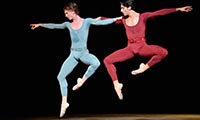


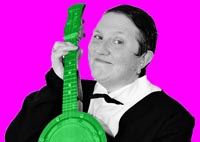
 Let’s Misbehave plays as we take our seats, setting the scene nicely for the one-woman show to follow.
Let’s Misbehave plays as we take our seats, setting the scene nicely for the one-woman show to follow.
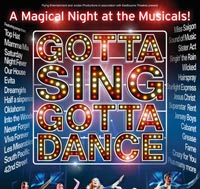

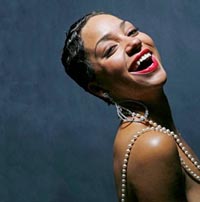


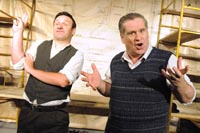

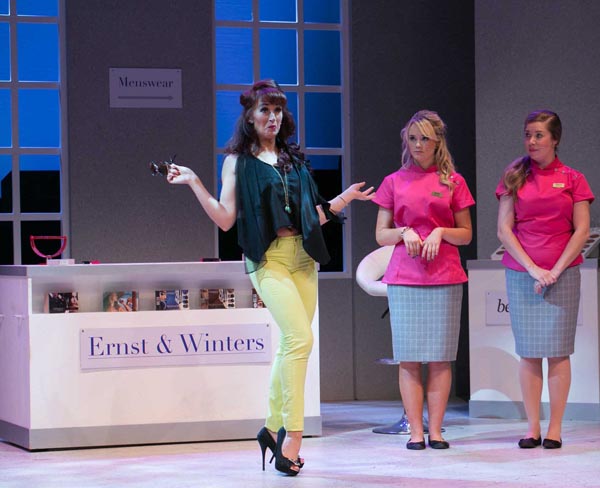

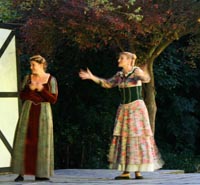


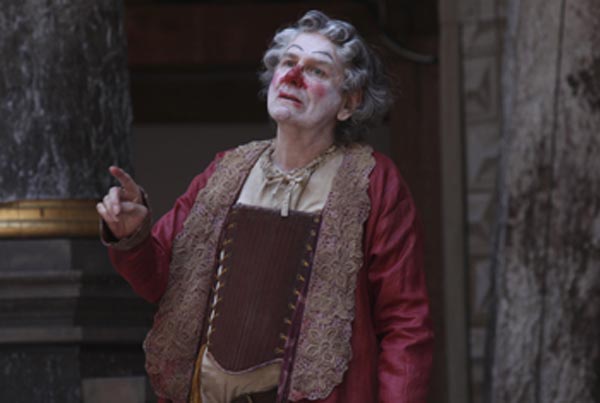


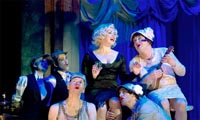






You must be logged in to post a comment.